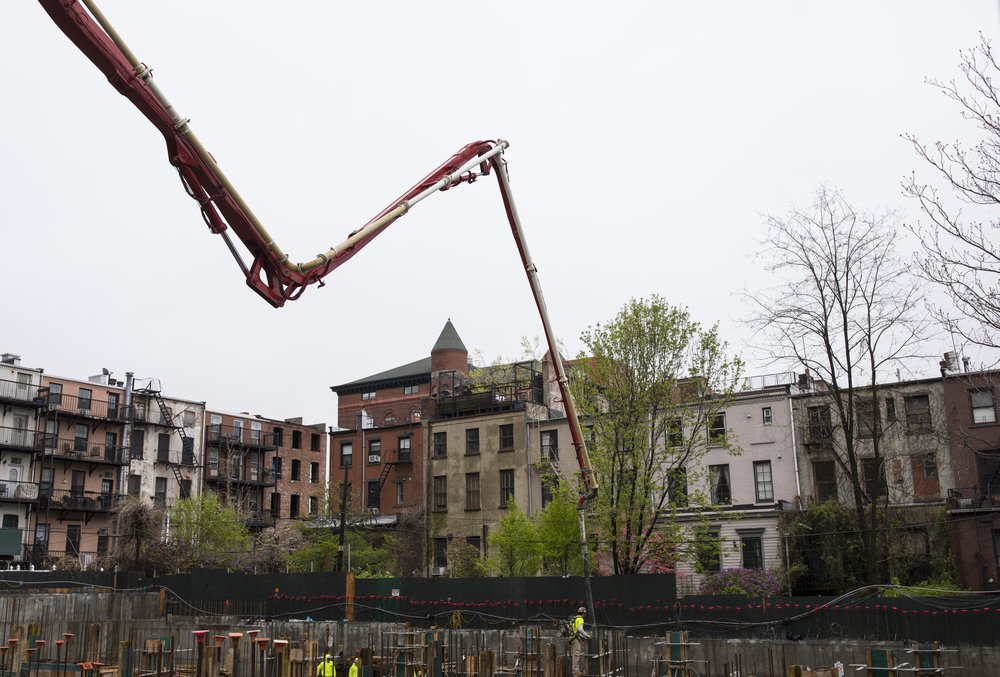NYC’s latest affordable housing program targets areas locking out low-income renters
Dec. 27, 2023, 1:46 p.m.
The new “Mixed Income Marketing Initiative” is targeting neighborhoods where low-income housing development has lagged, including much of Queens and Staten Island.

New York City is rolling out a new program designed to create more affordable apartments by mixing them in with luxury units in neighborhoods where low-income housing development lags.
The new "Mixed Income Marketing Initiative" from the city's Department of Housing Preservation and Development will offer developers tax breaks and other local subsidies in exchange for setting aside the majority of a project’s units for affordable housing.
The program will require developers to restrict rents based on tenant income in 70% of their units while allowing the same developers to charge whatever they want, without rent regulations, in the remaining 30%.
At least 15% of the new apartments must be reserved for people leaving city homeless shelters, according to HPD. The affordable units also must comply with rent stabilization rules restricting annual increases, and the subsidies will not apply to the market-rate apartments.
Kim Darga, HPD’s deputy commissioner of development, said the program will help speed up affordable housing production without relying on limited federal incentives for 100%-affordable projects or state tax breaks, such as the expired 421a program, that required about a quarter of units to be priced for low- and middle-income tenants.
“We are looking to provide a third path,” Darga said. “It really is going to take every possible idea and a lot of creativity in order to address the challenges that we see in New York with housing affordability.”
The new initiative comes as the city faces a growing affordability crisis: Evictions are on the rise, fewer than 1% of units priced below $1,500 a month citywide are vacant and available to rent, and average monthly rents are approaching $3,000 in Queens, according to RentCafe, a listing site.
HPD opened its application process for developers on Tuesday and included a map highlighting priority areas where affordable housing is especially limited, including in wealthier neighborhoods such as the Upper East Side, the Financial District and Park Slope in Brooklyn.
But Darga said the program also targets areas where rents are more moderate by NYC standards but still far too expensive for most tenants: places like Bayside, Maspeth, Ozone Park and Kew Gardens in Queens, and most of Staten Island.
Affordable housing production has lagged in many of those neighborhoods over the past decade. In City Council District 19, which includes Bayside, just 17 new income-restricted apartments were built between 2013 and 2021, according to an analysis of HPD data by the policy group New York Housing Conference. In Council District 32, which includes Ozone Park, there were 98 new units built during the eight-year span, the data shows.
A Gothamist review of city planning data shows more than 2,600 proposed housing units, including over 1,100 income-restricted apartments, were cut from development applications that required City Council approval since the start of 2022.
Mayor Eric Adams last year set a “moonshot” goal of 500,000 new homes over the next decade, but the current rate of development makes the chances of meeting that goal slim. The city financed the creation of roughly 12,000 new income-restricted units last fiscal year, according to HPD data.
The new initiative has already earned praise from affordable housing developers, the Real Estate Board of New York and other industry groups.
“This is an amazing advancement in the expansion of the tools available to develop much-needed affordable housing,” New York Real Estate Chamber Board Chair Craig Livingston said in a statement.
Sam Stein, a housing policy analyst at the Community Service Society, which promotes fair and affordable development, said the initiative seems like a good step for getting more deeply affordable housing into buildings with market-rate apartments.
But Stein cautioned that the program could foreshadow less direct public investment in affordable housing if the city comes to rely on luxury apartments to cover the costs of — or “cross-subsidize” — income-restricted units next door. That would lead to even fewer apartments priced for the lowest-income New Yorkers, he said.
“I fear we’re going to put less and less money into subsidies and expect market-rate apartments to do more of the work,” Stein said. “This is a fine program but one that leaves a few questions to be answered.”
Despite NYC housing shortage, developers and politicians trim 2,600 units from rezoning plans Hochul extends controversial housing tax break to Gowanus developers NYC's eviction hotspots: Tracking the 10K removals since moratorium ended Mayor Adams unveils plans to turn NYC offices into 20,000 new apartments